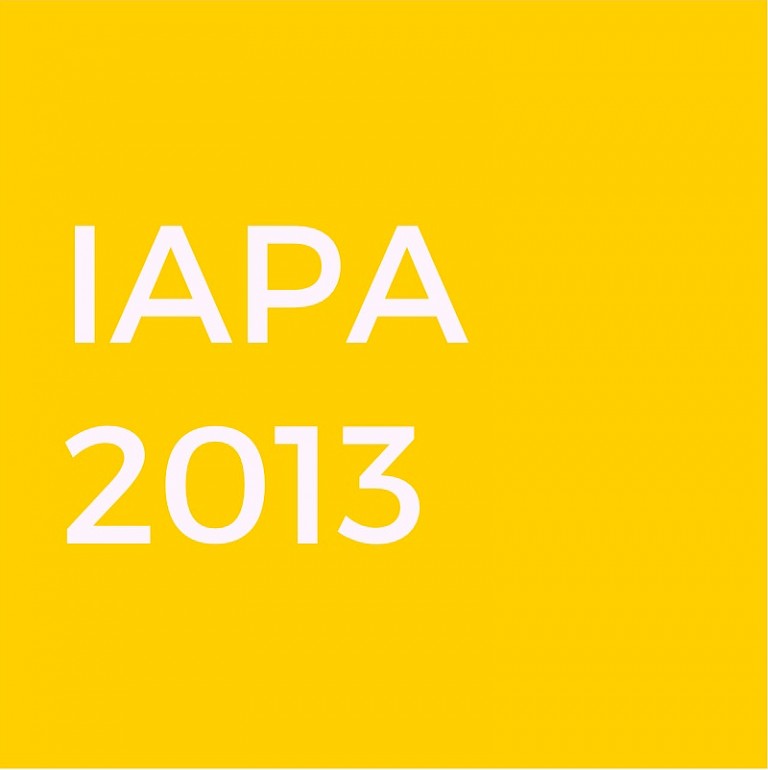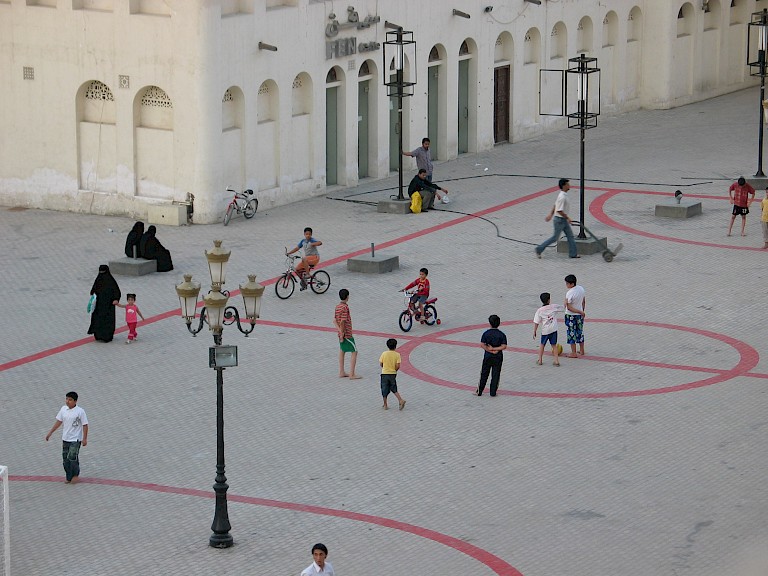



Maider López initially brought her interventions to Sharjah as part of the experimental residency Lab Project in 2007. It was during this residency that she first transformed the public square in the Arts Area by introducing the gridlines of a football pitch.
Invited back for the Biennial, López recreated Football Field, this time including Fountain, a temporary public drinking fountain.
Maider López enjoys interrupting assumptions by creating interventions in public spaces, situations, and architecture, articulating the politics of everyday life. She activates diverse publics to create unusual, contrasting, and mostly impossible situations through which she develops strategies to research and test how and in which conditions individuals from diverse layers of society can come together to act together.
“In Football Field, staged at the Art Square in Sharjah, the perfect geometry of a soccer field was painted onto the pavement in red lines. The existing urban furniture—lampposts, benches, and so on—remained in the middle of the field, between the two goalposts, where they were sure to interfere with any play carried out on the field. By overlaying this recreational use onto the square’s multifunctional structure, López created new interactions in the form of coexistence. The sociologist and philosopher Henri Lefebvre remarked that social spaces cannot be conceived of and imposed by power; rather, they emerge when used by citizens and, above all, when physically and symbolically reinvented by them. Hence works of art can contribute to the aesthetic questioning of the urban landscape and the reinvention of the concept of citizenship.”
(Rosa Martínez, abstract from Collection of the Museum Guggenheim Bilbao. Guggenheim Bilbao, 2009.)
Site-specificity underpins all of Lopez’s work, with interventions ranging from the subversive tampering with a space to the complete overturning of its usual operability. These interventions temporarily change the meaning of the location, and as a consequence change the public’s relationship to it.
At Sharjah Museum Square the project suggests a model for easy and relaxed integration of different activities, based on human relations. It’s informed and activated by the inhabitants of the space and their experience since it attempts to rework the idea of the city through the practice of the people. It demonstrates the human capacity for transforming urban space and building up the city to suit their own use of the space.
All copyright belongs to Shanghai Academy of Fine Arts, Shanghai University.


